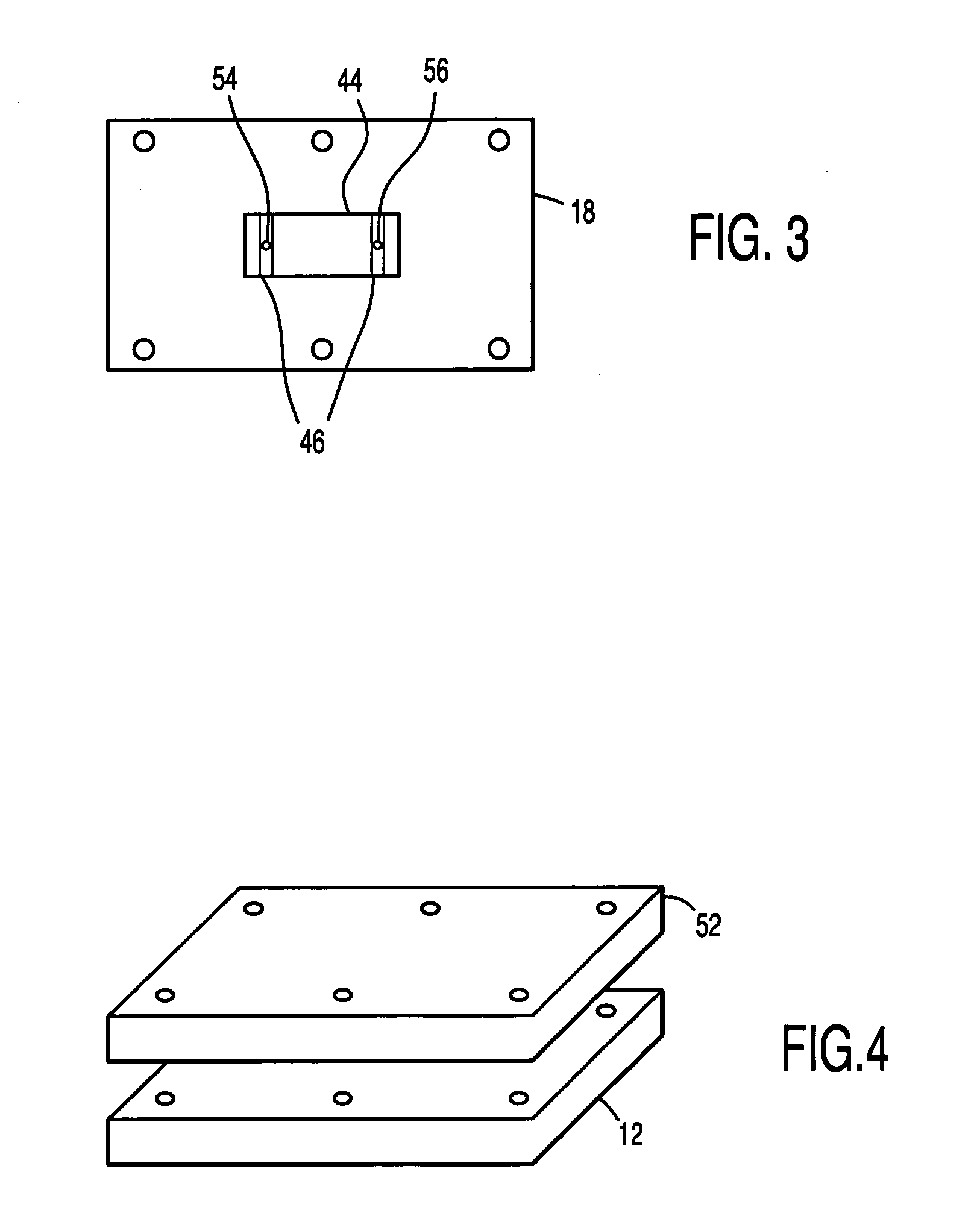Bioreactor and methods for tissue growth and conditioning
a bioreactor and tissue technology, applied in the field of tissue engineering, can solve the problems of inability to prove commercially viable, lack of proper mechanical properties or cellular functions of ex vivo cultured tissues, and inability to fully integrate and function
- Summary
- Abstract
- Description
- Claims
- Application Information
AI Technical Summary
Benefits of technology
Problems solved by technology
Method used
Image
Examples
example 1
Growth of Chondrocytes
This experiment shows that chondrocytes can be cultured in the bioreactor and the resulting construct exhibits an increase in type II collagen and mechanical strength after application of shear stress via perfusion.
The bioreactor had a top chamber 1.8 inches long and 0.5 inches wide; the growth area was 5.8 cm2. The cells were primary 2 to 4 week old bovine articular chondrocytes. The cells were plated at high densities (2×106 cells / cm2) in the top chamber of the bioreactor onto a porous, thin (10 micron), semipermeable (0.2 micron) polycarbonate membrane.
The cells were statically cultured for 2 weeks in a DMEM base media, supplemented with 10% fetal bovine serum (FBS), non-essential amino acids, ascorbic acid and gentamycin sulfate, and then subjected to shear stress (about 15 dynes / cm2) for 72 hrs in the bioreactor using perfusion. The flow rate was approximately 20 mL / min.
Results
Histological analysis showed the up-regulation of type II collagen af...
PUM
| Property | Measurement | Unit |
|---|---|---|
| pore diameters | aaaaa | aaaaa |
| pore diameters | aaaaa | aaaaa |
| thick | aaaaa | aaaaa |
Abstract
Description
Claims
Application Information
 Login to View More
Login to View More - R&D
- Intellectual Property
- Life Sciences
- Materials
- Tech Scout
- Unparalleled Data Quality
- Higher Quality Content
- 60% Fewer Hallucinations
Browse by: Latest US Patents, China's latest patents, Technical Efficacy Thesaurus, Application Domain, Technology Topic, Popular Technical Reports.
© 2025 PatSnap. All rights reserved.Legal|Privacy policy|Modern Slavery Act Transparency Statement|Sitemap|About US| Contact US: help@patsnap.com


